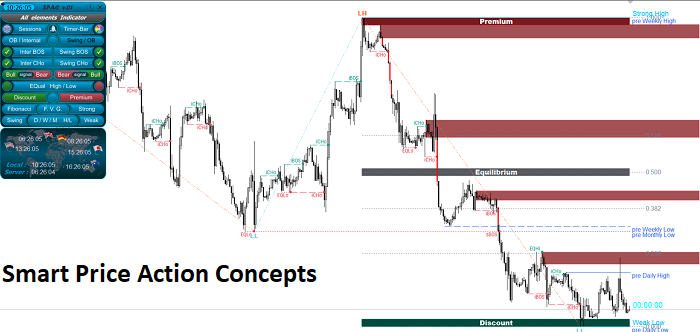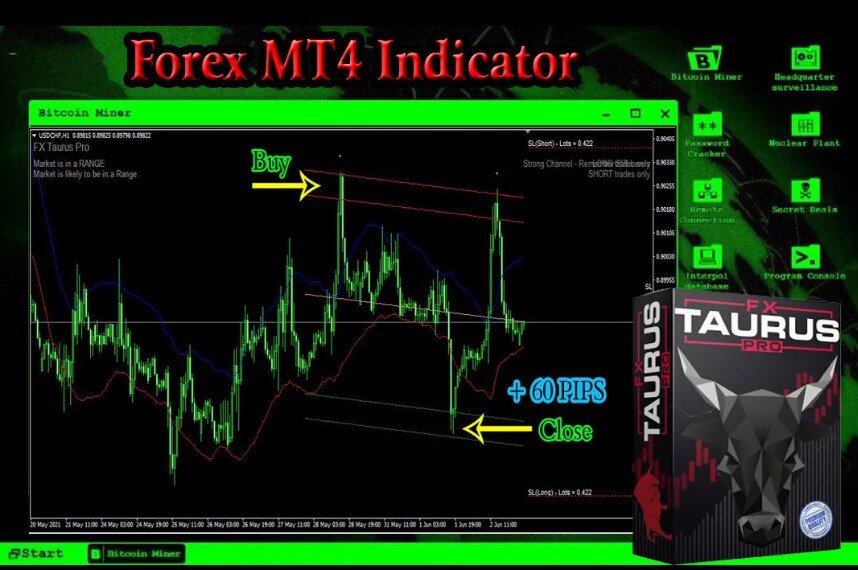Understanding Smart Price Action Concepts for Trading Success
Smart price action concepts refer to strategies used by professional and institutional traders to analyze markets and make informed trading decisions. These concepts provide valuable insights into price movements and market structure that can give traders an edge. This comprehensive guide will explain smart price action concepts in detail to help traders of all levels improve their analysis skills.

Download Free Smart Price Action Concepts
What are Smart Price Action Concepts?
Smart price action concepts encompass various techniques to understand the psychology behind price movements using raw price data and volume. These concepts originated from traders studying how large institutions and banks trade and aim to align retail traders with the “smart money”.
Some key smart price action concepts include:
- Order Blocks – Significant price levels where imbalances in supply and demand occur. Used to identify support and resistance.
- Volume Analysis – Using volume to assess the strength or weakness of trends and key price levels.
- Market Structure – Analyzing swing highs and lows to understand market cycles.
- Liquidity – Understanding where liquidity rests in the market for institutions to hunt.
- Fair Value Gaps – Gauging when prices are overextended or undersold relative to their fair value.
Why Smart Price Action Concepts Matter
Smart money moves markets, so understanding how they operate gives individual traders key insights into upcoming market movements. Aligning trades with smart money concepts improves the probability of success.
Additionally, smart price action concepts help traders think objectively. By analyzing raw price data and volume, traders can make informed decisions rather than relying on emotions or assumptions.
Key benefits of using smart price action concepts include:
- Better identification of high probability setups
- Understanding institutional order flow and behavior
- Determining optimal entries and exits
- Assessing when trends are strong or weak
- Improved risk management using market structure
Core Smart Price Action Concepts
Now let’s explore some core smart price action concepts that traders should know.
Order Blocks
Order blocks represent areas on the chart where significant imbalances between buying and selling pressure occurred, resulting in a sharp price movement.
There are two types of order blocks:
Buy Order Blocks: Form after a bullish price swing, indicating more buyers than sellers. Usually act as support in uptrends.
Sell Order Blocks: Form after a bearish price swing, indicating more sellers than buyers. Usually act as resistance in downtrends.
Order blocks are used to identify key support and resistance levels, assess when trends are weakening, and act as targets for stop losses or take profits. Valid order blocks that witness significant buying or selling pressure are more likely to hold as support and resistance.
Volume Analysis
Volume indicates the amount of trading activity behind price movements. Analyzing volume provides clues into the strength or weakness of trends and key price levels.
High Volume at Order Blocks: Validates the importance of the price level. More volume reflects stronger commitment from buyers or sellers.
Low Volume Breakouts: Weakens the sustainability of trends and breakouts. Low trading activity reflects lack of commitment.
Volume Climax: Heavy trading activity that is unsustainable. Often leads to trend reversals.
By assessing volume, traders can gauge whether trends have strong or weak foundations for continuation.
Market Structure
Market structure analysis involves identifying key swing points to understand the prevailing trend, momentum, and cycles.
Swing Highs/Lows: Pivotal peaks and troughs where trends shift from bullish to bearish or vice versa.
Breaks of Structure: Price moving above a swing high or below a swing low, indicating a shift in market structure.
Changes of Character: Price breaking a swing point but failing to break the next one, indicating potential trend weakness or reversal.
Analyzing market structure allows traders to objectively assess the strength of trends, identify reversals early, and pinpoint optimal entry points.
Liquidity Concepts
In smart money concepts, liquidity refers to resting buy or sell orders that provide volume to allow big players to enter or exit positions. Understanding where liquidity sits allows traders to identify areas institutions will target.
Common liquidity concepts include:
- Fair Value Gaps (FVG): Gaps between a swing high and low. Often get filled as price returns to “fair value”.
- Order Block Retests: Old order blocks acting as liquidity before price continuation.
- Chart Patterns: Flags, wedges, triangles that develop as consolidation before further trending.
- Trend Line Breaks: Trend line liquidity pools get targeted on breaks before further movement.
- Previous Structure Highs/Lows: Liquidity sits at previously significant swing points.
Identifying liquidity setups provides excellent risk/reward scenarios for traders to capitalize on.
Trading with Smart Price Action Concepts
Now let’s discuss how to actually implement smart price action concepts into a trading plan:
Start with the Higher Time Frames
Institutional traders operate on higher time frames looking for long term direction[10]. Analyze the daily, weekly or even monthly charts first to understand the prevailing market structure. Then drill down to lower time frames for entry execution.
Identify Key Levels
Use order blocks, support, resistance, previous swing points and volume to identify key levels. These act as targets for institutions to hunt liquidity. Wait for price to return to key levels before anticipating entries.
Assess Market Structure
Analyze structure on both lower and higher time frames. Uptrends will form series of higher highs and higher lows for example. Only trade in the direction of the prevailing structure on higher time frames.
Define Risk-Reward Ratios
Use key levels to set stop losses below support in uptrends or above resistance in downtrends. This defines risk. Target liquidity points like order block retests to set take profits and define reward potential.
Be Patient with Entries
Don’t anticipate entries early. Wait for confirmation such as volume climaxes at levels or pattern breaks before entering at optimal points with predefined risk.
Trail Stops to Protect Profits
Use market structure like new swing points or breaks to trail stops. Lock in profits as the market moves in your favor. Don’t get greedy chasing price.
Common Trading Mistakes
Here are some common mistakes traders should avoid when applying smart money concepts:
- Trading Against Higher Time Frames: Always trade in the direction of the trend on higher time frames.
- Overcomplicating Analysis: Don’t overload your charts with excess indicators. Keep analysis simple.
- Not Using Volume: Volume provides clarity to price action. Don’t make trading decisions without assessing volume.
- Poor Risk Management: Always use recent swing highs/lows to define stop losses and risk.
- Overleveraging: Use position sizing that matches your risk tolerance and account size.
- Overtrading: Patience is key. Wait for high-probability setups to develop before entering.
The Benefits of Mastering Smart Price Action Concepts
Learning smart price action concepts takes dedication, but doing so can significantly improve trading outcomes. Benefits include:
- Better identification of high-probability market moves
- Improved risk management using market structure
- More objective analysis of price action and volume
- Alignment with trends backed by institutional order flow
- Internalization of a professional trading mindset
- Increased confidence through experience identifying concepts
While challenging, mastering smart money concepts is one of the most rewarding endeavors for aspiring traders.
Smart Price Action Concepts Final Thoughts
Smart price action concepts for Metatrader 4 provide a rule-based, objective approach to trading by understanding order flow and the psychology behind price movements. Key concepts include order blocks, volume analysis, market structure, and trading liquidity. Mastering these institutional techniques can give individual traders a valuable edge. However, traders should start applying smart money concepts in a demo account first before risking real capital. Patience and screen time are vital in order to gain experience identifying smart price action trading setups across different market conditions.


